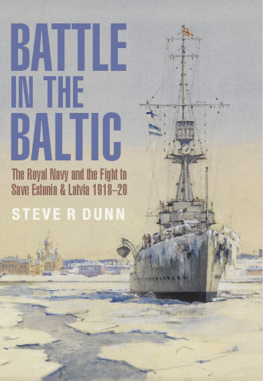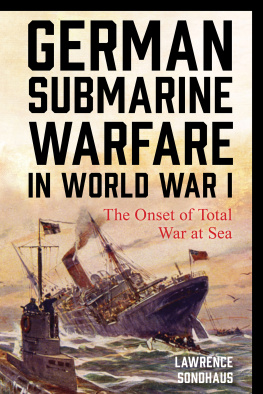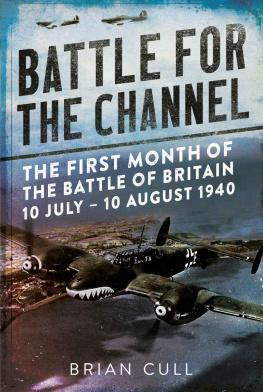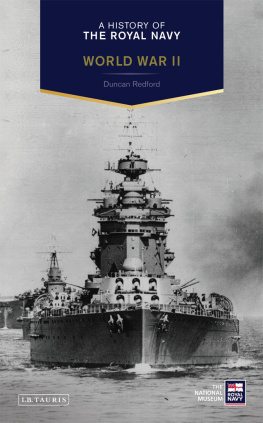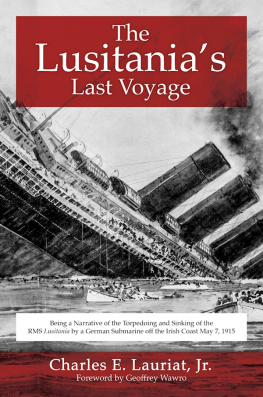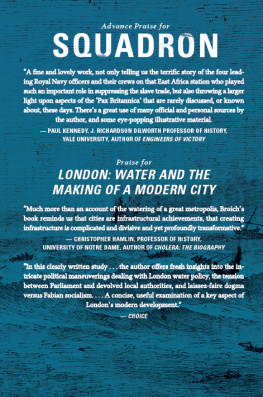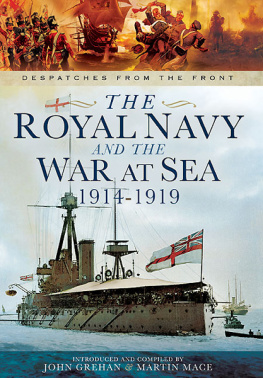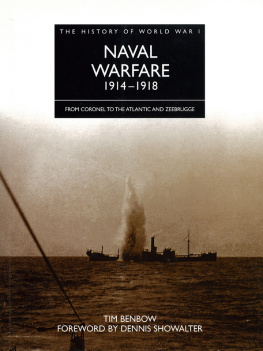BAYLYS WAR
BAYLYS WAR
The Battle for the Western Approaches in the First World War
STEVE R DUNN
Dedication
For my friend Stephen Greensted
Copyright Steve R Dunn 2018
First published in Great Britain in 2018 by
Seaforth Publishing,
An imprint of Pen & Sword Books Ltd,
47 Church Street, Barnsley S70 2AS
www.seaforthpublishing.com
British Library Cataloguing in Publication Data
A catalogue record for this book is available from the British Library
ISBN 978 1 5267 0123 7 ( HARDBACK )
ISBN 978 1 5267 0125 1 ( EPUB )
ISBN 978 1 5267 0124 4 ( KINDLE )
All rights reserved. No part of this publication may be reproduced or transmitted in any form or by any means, electronic or mechanical, including photocopying, recording, or any information storage and retrieval system, without prior permission in writing of both the copyright owner and the above publisher.
The right of Steve R Dunn to be identified as the author of this work has been asserted by him in accordance with the Copyright, Designs and Patents Act 1988.
Pen & Sword Books Limited incorporates the imprints of Atlas, Archaeology, Aviation, Discovery, Family History, Fiction, History, Maritime, Military, Military Classics, Politics, Select, Transport, True Crime, Air World, Frontline Publishing, Leo Cooper, Remember When, Seaforth Publishing, The Praetorian Press, Wharncliffe Local History, Wharncliffe Transport, Wharncliffe True Crime and White Owl
List of Plates
Plate section located between pages 128 and 129.
John Redmond. (Authors collection)
Edward Carson. (Authors collection)
Skipper James Hagan of the Daniel OConnell. (Courtesy of Arklow Maritime Museum)
Skipper Edward White of the drifter Elizabeth. (Courtesy of Arklow Maritime Museum)
Eamon de Valera c.1920. (Authors collection)
Woodrow Wilson. (Authors collection)
Admiral William S Sims USN. (Authors collection)
Admiral William Sims raises his flag at Queenstown, taking command while Bayly has a holiday. (Courtesy of Alamy Ltd)
Admiral Sir Lewis Bayly. (Authors collection)
A postcard of Queenstown c.1900. (Authors collection)
Queenstown in 2016. (Authors collection)
Admiralty House. (Image reproduced courtesy of the National Library of Ireland)
A pre-war view of Haulbowline Island and dockyard. (Image reproduced courtesy of the National Library of Ireland)
HMS Adventure. (Authors collection)
RMS Lusitania. (Authors collection)
The painting The Return of the Mayflower, depicting the arrival of the US destroyers at Queenstown, by Bernard Finegan Gribble. (Authors collection)
The USN depot ship USS Melville at Queenstown. ( Imperial War Museum Q 18793)
The destroyer USS Paulding at Queenstown. (Authors collection)
The sloop HMS Zinnia. ( Imperial War Museum Q 75459)
The Beagle-class destroyer HMS Wolverine. ( Imperial War Museum Q 109160)
The M-class destroyer Mary Rose. ( Imperial War Museum Q 20404)
The old cruiser HMS Drake. (Courtesy Library of Congress, USA)
The Canopus-class battleship HMS Ocean. (Authors collection)
An album cover made for USN base Wexford. (Authors collection)
A programme of a typical entertainment at the USN recreational facility at Queenstown. (Authors collection)
Baylys deployments to protect the South-western and Western Approaches in March 1917 (taken from Naval Staff Monographs vol XVIII, May 1933)
The memorial designed by Jerome Connor in Cobh dedicated to the victims of the Lusitania sinking. (Authors collection)
The gravestone in Cobh Old Church Cemetery of Captain Frederick Parslow. (Authors collection)
The memorial plaque commemorating the US Navys arrival in Ireland. (Authors collection)
The part that Queenstown played in the Great War is not generally known, by reason of the very necessary veil of secrecy that was drawn over its work. Someday the full story will be told and it will prove to be thrilling and amazing, for some of the most daring exploits were performed by the craft based on this port.
The Times, 17 June 1919.
I have never seen a brave man. All men are frightened. The more intelligent they are, the more they are frightened. The courageous man is the man who forces himself, in spite of his fear, to carry on.
General George S Patton, War as I Knew It
(Bantam Books, 1980), p 322.
I have met perhaps a dozen or so of VCs and in every case they explained that they did the first thing that came into their head without worrying about alternatives. One man headed a charge into a mass of Afghans ... and cut down five of them. All he said was; Well, they were there and they wouldnt go away. What was a man to do? Write a note and ask em to shift?
Rudyard Kipling, Winning the Victoria Cross,
Windsor Magazine, 1897.
A Note on the Structure and Intent of this Book
Baylys War is divided into three sections. Part One covers the Coast of Ireland Command from before the outbreak of the First World War until the declaration of war on Germany by America in April 1917. It examines the pre-war development of Queenstown as a naval base and its role in the war under two admirals.
focuses on the period from the arrival of the American forces in Ireland to the end of the war, all under Admiral Baylys leadership.
examines Baylys leaving of the command and the Royal Navy, his continued bitterness at his treatment and his legacy and remembrance. It concludes with a critical analysis of the tactics used during Baylys time in post and the results obtained.
First and foremost, it is the intention of the author to tell a story; a true story of sacrifice and quotidian bravery. The method is to use individual incidents which build to a whole hopefully greater than the sum of the parts. This book is not a day-by-day history but a story compounded of many separate actions. Neither is it a biography, although Lewis Bayly, as the presiding admiral for most of the period covered, clearly provides a linking theme and his character and role are important to the telling of the narrative. The recounting of the Queenstown command is also tied to the story of Ireland and its growing nationalism during the war. This interrelationship is related here primarily from the perspective of the British forces and politicians and is not intended to be seen as an unbiased treatment; it reflects what the men on the ground and in the ships believed.


